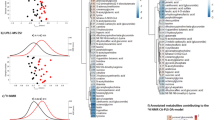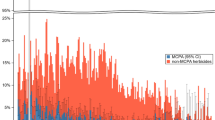Abstract
In a previous communication1 it was shown that β-glucuronidase in liver or kidney rises following administration of toxic agents to mice, depending upon the organ or organs affected. It was suggested that a rise in this enzyme is associated with tissue repair rather than the damage itself. This view is confirmed by results for kidney following administration of mercuric nitrate or chloroform to male mice. In each case, the rise in the enzyme did not occur in the early stages of poisoning, but was seen when repair was well advanced.
This is a preview of subscription content, access via your institution
Access options
Subscribe to this journal
Receive 51 print issues and online access
$199.00 per year
only $3.90 per issue
Buy this article
- Purchase on SpringerLink
- Instant access to full article PDF
Prices may be subject to local taxes which are calculated during checkout
Similar content being viewed by others
References
Kerr, L. M. H., and Levvy, G. A., Nature, 160, 463 (1947).
Fishman, W. H., and Fishman, L. W., J. Biol. Chem., 152, 487 (1944).
Fishman, W. H., Science, 105, 646 (1947).
Author information
Authors and Affiliations
Rights and permissions
About this article
Cite this article
KERR, L., LEVVY, G. & CAMPBELL, J. β-Glucuronidase and Tissue Proliferation. Nature 160, 572 (1947). https://doi.org/10.1038/160572a0
Issue date:
DOI: https://doi.org/10.1038/160572a0



